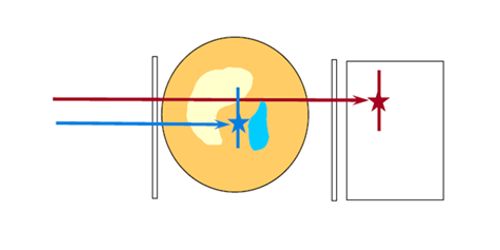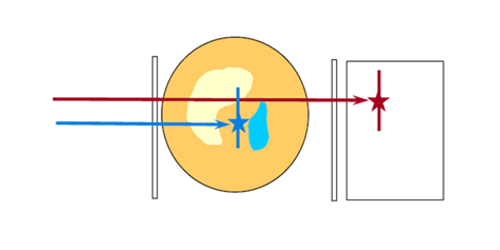Giving Proton Therapy Energies a Boost
At proton therapy cancer treatment facilities, cancer-killing protons are whipped to energies of up to 250 MeV in circular accelerators called cyclotrons. Now researchers have proposed an add-on for medical cyclotrons that could increase this energy by 40%, allowing cyclotron facilities to be used to image the inside of a human body as well as to kill cancer cells.
Protons damage cells near the locations where the particles come to a stop. For example, protons with energies of 250 MeV travel through about 38 cm of human tissue before killing cells and stopping . This distance is sufficient to treat most tumors, but not far enough for imaging applications, which require protons that fully traverse the body. A proton’s energy when it exits the body depends on the properties of the tissues and organs it passed through, so doctors could precisely map tumors. But first they need higher energy beams, which existing facilities can’t currently generate.
To solve this problem, Alberto Degiovanni at the TERA Foundation in Italy and colleagues propose inserting a linear accelerator (linac), 7 meters in length, in between the cyclotron and the treatment room. The linac could boost the proton energy by 100 MeV. These higher energy protons could traverse up to 66 cm of human tissue, allowing imaging of most human bodies. The researchers say that proton imaging should be more precise than existing tumor imaging techniques that involve x rays, which can overestimate the size of a tumor. Thus, proton imaging could allow doctors to reduce the volume they irradiate when targeting a tumor and also allow them to safely target tumors that sit close to healthy organs.
This research is published in Physical Review Accelerators and Beams.
–Katherine Wright
Katherine Wright is a Contributing Editor for Physics.





